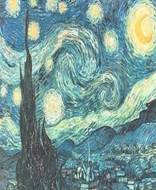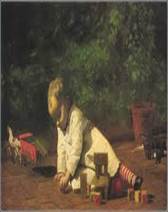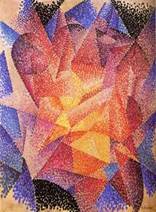Exercise 18. Read the text C for 9 minutes




1. Cubism (1908-1920): all media. This term refers to the movement dominated by the geometric reconstruction of object utilizing flat surfaces and blocks of color. It was one of the most popular movements of the 20th century founded by Pablo Picasso and Georges Braque in 1907. The birth of Cubism was influenced by the later works of Cezanne.
2. Realism (Mid-19th Century): painting, prints, sculpture, works on paper. This term refers to a group of painters in France, known as the Barbizon School, who pioneered a naturalist philosophy that art should reflect ordinary life. Images of peaceful and contented country life grew out of this movement. However, the defining moment for Realism came after the Revolution of 1848 in France when artists such as Gustave Courbet and Honore Daumier turned their attention to the working-class and poor.(Leonardo Da Vinci, Thomas Eakins)
3. Impressionism (1874-1876): paintings, prints, works on paper, sculpture. Impressionism is the term applied to an art movement in France during the late 19th century that focused on landscapes and scenes of everyday life. The movement was very anti-academic in style, and often disobeyed the traditional rules of the Salon. It can be identified by their treatment of light, color, and brushwork. Leading artists of this movement included Monet, Pissarro, Renoir, Degas and Manet, among others
4.Baroque (1620-1715): painting, prints, works on paper, sculpture. In the visual arts, Baroque was a period dominated by exaggeration and detail. Artists such as Peter Paul Rubens, Diego Velazquez, Caravaggio, Cortona are known for their dramatic works associated with this movement.
5. Expressionism (1905-1925): all media. This term refers to the movement which manipulates the visual elements of an image to convey intense subjective feelings. In expressionist art, color is highly intense, brushwork is free and application of paint is heavy and textured.(Marc Chagall, Wassily Kandinsky, Ludwig Kirchner)
6. Fauvism (1905-1908): painting. This term refers to the movement identified by its high energy and brilliant colors which conveyed an intense visual experience. Originating in France, around 1905, Henri Mattise and his followers combined bold primary colors with dynamic brushwork, winning the label of Fauves, or "Wild Beasts." Fauvism is often seen as a combination of the Post-Impressionism of Van Gogh and the Neo-Impressionism of Seurat.
7. Futurism (1909-1918): all media. This term refers to the Italian movement influenced by Cubism in the early 1900s. Futurism attacked everything that was old and promoted the modern world of industry and technology. The leading artists of this movement included Balla, Boccioni and Severini
8. Surrealism (1924-1940s): all media. This term refers to the movement founded by French writer Andre Breton. The aim of the surrealists was to discover the larger reality, or "surreality," that lay beyond tradition. Artists such as Dali and Magritte were known for their surrealist paintings dominated by biomorphic forms.
9. Renaissance (1400-1600): painting, prints, works on paper, sculpture. The Renaissance was a time of rebirth spanning from the 15th through the 17th century. In the visual arts, it was best known for its development of linear perspective as seen through the works of Leonardo da Vinci and Michelangelo



 Exercise 19. Think over which paragraph of the text belongs to these pictures (above and below). Name other styles you are familiar with.
Exercise 19. Think over which paragraph of the text belongs to these pictures (above and below). Name other styles you are familiar with. Exercise 20. Match art styles in column A to their definitions in column B:
